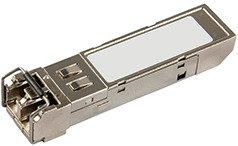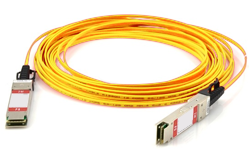
Viz Engine Administrator Guide
Version 5.2 | Published March 20, 2024 ©
General Information and Introduction
General Description
From a pure Viz Engine viewpoint, the main standards we have to deal with are SMPTE ST 2110-20 (video), -30 (audio) and -40 (ancillary data) as well as SMPTE ST 2059-2 (synchronization profile). Those elements are transported in the essence network. If NMOS is also part of the infrastructure, a separate management network might be available. In addition to the standards mentioned before, other IT infrastructure elements, like DNS and DHCP, could be available.
A typical SMPTE ST 2110 network consists of various endpoint devices connected to one or more switches. The switches might be arranged in a spine-leaf architecture, with high bandwidth backbone switches and lower bandwidth leaf switches where the devices connect to. Additionally, one or more PTP clocks are required for synchronization. Having DHCP and/or DNS servers running in your network could increase manageability.
In NMOS controlled networks, an RDS and a Network Orchestrator/Controller might be part of the infrastructure as well, although not all NMOS Controllers need a registration server, as they are sending RESTful calls directly to the devices.
Standards
SMPTE ST 2110
|
Standard |
Definition |
|
2110-20 |
Uncompressed video flows. |
|
2110-21 |
Defines traffic shaping and delivery timing. Defines terms like Narrow Sender/Receiver and Wide Sender/Receiver. |
|
2110-22 |
Constant Bit-Rate Compressed video flows. |
|
2110-30 |
Uncompressed audio flows. |
|
2110-31 |
Compressed audio flows according to AES3. |
|
2110-40 |
Ancillary data flows. |
|
2110-41 |
Fast metadata flows (WIP). |
AMWA NMOS
|
Id |
Name |
Description |
|
IS-04 |
Discovery & Registration |
Allows control and monitoring applications to find the resources on a network. |
|
IS-05 |
Device Connection Management |
Provides a transport-independent way of connecting Media Nodes. |
|
IS-06 |
Network Control |
Lets broadcast control applications manage what happens on the network itself. |
|
IS-07 |
Event & Tally |
Provides an IP-friendly mechanism to carry time-sensitive information, like tally or event data. Is similar to GPIO in a traditional broadcast environment. |
|
IS-08 |
Audio Channel Mapping |
Allows channel-level operations within NMOS environments like channel muting, language swapping,... |
|
IS-09 |
System Parameters |
Allows an NMOS Node to obtain global configuration parameters that are common across the system. |
|
IS-10 |
Authorization |
Allows an API server to accept or reject requests depending on what a client is authorized to do. |
|
IS-11 |
Sink Metadata Processing |
Provides information about physical devices called Sinks associated with Receivers. Allows to configure media parameters of Senders based on information about Sinks. |
|
MS-04 |
ID & Timing Model |
Documents a model for identity and timing that applies to AMWA NMOS specifications that apply to content |
|
MS-05-01 |
NMOS Control Architecture Framework |
Defines a system for modelling various types of devices which interrelates with existing NMOS Specifications and the JT-NM Reference Architecture. |
|
BCP-002-01 |
Natural Grouping |
Documents best practice and recommendations for how to indicate and handle “Natural Groups” of Resources in AMWA NMOS APIs. |
|
BCP-003-01 |
Secure Communications in NMOS Systems |
Documents best practice for using secure transport for NMOS API communications. |
|
BCP-003-02 |
Authorization in NMOS Systems |
Documents best practice for an API server to accept or reject requests depending on what a client is authorized to do. |
|
BCP-003-03 |
Certificate Provisioning in NMOS Systems |
Documents best practice for automated provisioning of TLS Server Certificates to NMOS APIs. |
|
BCP-004-01 |
Receiver Capabilities |
Allows an IS-04 Receiver to express parametric constraints on the types of streams that it is capable of consuming. |
|
BCP-005-01 |
EDID to Receiver Capabilities Mapping |
Provides a scheme and guidelines for expressing EDID information via Receiver Capabilities. |
See Networked Media Open Specifications for more details.
Definition of Terms
|
Term |
Definition/Explanation |
|
SMPTE ST 2110 |
A series of specifications covering various aspects of transporting media content over IP, as well as describing the related infrastructure topics. |
|
AMWA NMOS |
Advanced Media Workflow Association Networked Media Open Specification A family of specifications that enable interoperability between media devices on an IP infrastructure. |
|
IGMP |
The Internet Group Management Protocol is a communication protocol used by hosts and adjacent routers on IPv4 networks to establish multicast group memberships. It is an integral part of IP multicast and allows the network to direct multicast transmissions only to hosts that have requested them. |
|
SDP |
The Session Description Protocol is a format for describing multimedia communication sessions. NMOS IS-05 uses the SDP to describe the content and format of the sender flow, to which a receiver should connect to. |
|
SFP |
A Small Form-Factor Pluggable is a compact, hot-pluggable network interface module used together with a Fiber-Optics cable to connect SMPTE ST 2110 devices to a switch. |
|
AOC |
Active Optical Cable have the optical electronics already connected, eliminating the connectors between the cable and the optical module. |
|
DAC |
Direct Attach Copper use twin-axial copper cables directly attached to the SFP. |
|
FEC |
Forward Error Correction is a technique used for controlling errors in data transmission. |
|
PTP |
Precision Time Protocol is a protocol used to synchronize clocks throughout a computer network. For broadcast media systems the PTP profile defined in SMPTE 2059-2 is required. |
|
BMCA |
The Best Master Clock Algorithm is a method to determine the best clock based on a series of properties. |
|
Describes the method to send management data on the same network as the media data. |
|
|
Describes the method to send management data over a network separated from the media data network. |
|
|
DHCP |
The Dynamic Host Configuration Protocol is a network management protocol used for automatically assigning IP addresses. |
|
DNS |
The Domain Name System is a hierarchical and decentralized naming system for computers, services, or other resources connected to the network. |
|
DNS-SD |
DNS-based Service Discovery allows clients to discover a named list of service instances and to resolve those services to hostnames using standard DNS queries. |
|
RDS |
A Registration & Discovery Server is used to register Nodes, Devices, Senders and Receivers in a centralized place using NMOS IS-04. |
|
SDN |
Software-defined networking technology is an approach to network management that enables dynamic and efficient configuration. |
|
REST |
Representational state transfer defines a set of constraints for how the architecture of a big network infrastructure should behave. A web API that obeys the REST constraints is informally described as RESTful and is typically loosely based on HTTP methods to access resources via URL-encoded parameters and the use of JSON or XML to transmit data. |
|
NIC |
A Network Interface Controller is a computer hardware component that connects a computer to a computer network. |
|
MAC address |
A Media Access Control address is a unique identifier assigned to a NIC for use as a network address in communications within a network segment. |

